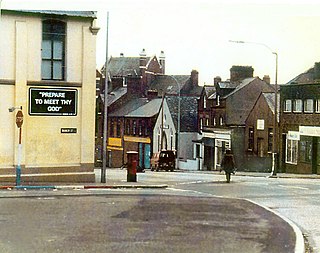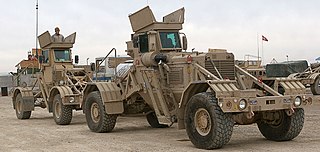 W
WBomb disposal is an explosives engineering profession using the process by which hazardous explosive devices are rendered safe. Bomb disposal is an all-encompassing term to describe the separate, but interrelated functions in the military fields of explosive ordnance disposal (EOD) and improvised explosive device disposal (IEDD), and the public safety roles of public safety bomb disposal (PSBD) and the bomb squad.
 W
WThe 52nd Ordnance Group (EOD) is the command and control headquarters for all U.S. Army Explosive Ordnance Disposal (EOD) Battalions and Companies located east of the Mississippi River in the Continental United States (CONUS). The current command team consists of Colonel Gregory J. Hirschey and Command Sergeant Major Michael C. Gray. Their command covers 184th and 192nd Ordnance Battalion (EOD), as well as the 63rd Chemical Company (CBRN). Subordinate units maintain EOD Response Teams, which evaluate, render safe, and remove conventional, chemical/biological, or nuclear ordnance, or improvised explosive devices (IEDs) which pose an immediate threat to public safety. While subordinate units are trained and equipped for combat operations, they may also support a variety of peacetime missions, to include range surface clearance operations of active U.S. Army installations, EOD and UXO operations in support of civilian law enforcement agencies, and support to the U.S. Secret Service for protection of VIPs.
 W
WNo. 5131 (BD) Squadron was an Explosive Ordnance Disposal (EOD) squadron of the Royal Air Force. The squadron deployed to EOD alerts throughout the United Kingdom and had an additional role to undertake worldwide. 5131 was the only UK military EOD team that was qualified to deal with ejection seats, aircraft canopies, and bomb disposal work undertaken in the airfield environment. The squadron latterly operated out of RAF Wittering in Cambridgeshire as an element of No. 42 Wing.
 W
WAn ammunition technical officer (ATO) is an officer involved in all aspects of the army's use of ammunition. This includes: bomb disposal, clearance of ERW, explosives accident investigation, procurement, in service management, storage, and inspection and repair.
An ammunition technician (AT) is a British Army soldier, formerly of the Royal Army Ordnance Corps but since 1993 of the Royal Logistic Corps, trained to inspect, repair, test, store, and modify all ammunition, guided missiles, and explosives used by the British Army. These technicians are also trained to use demolition to safely dispose of individual items of ammunition and explosives (EODs) or to conduct logistics disposal of bulk stocks of multi items. After gaining sufficient experience, those who show the appropriate qualities are given extra training to render safe improvised explosive devices (IEDs) by a process called improvised explosive device disposal. Experienced ATs may be called to give evidence as expert witnesses in criminal or coroner's courts in relation to ammunition or explosives or to EOD and IEDD duties.
 W
WA bomb suit, Explosive Ordnance Disposal (EOD) suit or a blast suit is a heavy suit of body armor designed to withstand the pressure generated by a bomb and any fragments the bomb may produce. It is usually worn by trained personnel attempting bomb disposal. In contrast to ballistic body armors, which usually focus on protecting the torso and head, a bomb suit must protect all parts of the body, since the dangers posed by a bomb's explosion affect the entire body.
 W
WThe Clearance Diving Branch is the specialist diving unit of the Royal Australian Navy (RAN) whose versatile role covers all spheres of military diving, and includes explosive ordnance disposal and maritime counter-terrorism. The Branch has evolved from traditional maritime diving, and explosive ordnance disposal, to include a special operations focus.
 W
WDemining or mine clearance is the process of removing land mines from an area. In military operations, the object is to rapidly clear a path through a minefield, and this is often done with devices such as mine plows and blast waves. By contrast, the goal of humanitarian demining is to remove all of the landmines to a given depth and make the land safe for human use. Specially trained dogs are also used to narrow down the search and verify that an area is cleared. Mechanical devices such as flails and excavators are sometimes used to clear mines.
 W
WUnited States Navy Explosive Ordnance Disposal technicians render safe all types of ordnance, including improvised, chemical, biological, and nuclear. They perform land and underwater location, identification, render-safe, and recovery of foreign and domestic ordnance. They conduct demolition of hazardous munitions, pyrotechnics, and retrograde explosives using detonation and burning techniques. They forward deploy and fully integrate with the various Combatant Commanders, Special Operations Forces (SOF), and various warfare units within the Navy, Marine Corps, Air Force and Army. They are also called upon to support military and civilian law enforcement agencies, as well as the Secret Service.
 W
WThe Husky VMMD is a South African configurable counter-IED MRAP designed for route clearance and demining. It is designed to assist in the disposal of land mines and improvised explosive devices.
 W
WBomb disposal is an explosives engineering profession using the process by which hazardous explosive devices are rendered safe. Bomb disposal is an all-encompassing term to describe the separate, but interrelated functions in the military fields of explosive ordnance disposal (EOD) and improvised explosive device disposal (IEDD), and the public safety roles of public safety bomb disposal (PSBD) and the bomb squad.
 W
WA JERRV is any vehicle that United States military engineers and Explosive Ordnance Disposal (EOD) units use in war zones such as Iraq.
 W
WKrakatoa is a modular explosive device used for explosive ordnance disposal (EOD) or demolitions developed by the British company Alford Technologies. The device is designed to fire a number of different projectiles, operates both in air and underwater, and can be used in a vertical or horizontal orientation.
 W
WThe Mobile Brigade Corps abbreviated Brimob is the special operations, paramilitary, and tactical unit of the Indonesian National Police (Polri). It is also known as for being one of the oldest existing units within Polri. Some of its main duties are counter-terrorism, riot control, high-risk law enforcement where the use of firearms are present, search and rescue, hostage rescue, and bomb disposal operations. The Mobile Brigade Corps is a large component of the Indonesian National Police trained for counter-separatist and counter-insurgency duties, often in conjunction with military operations.
 W
WThe Naval Service Diving Section (NSDS) is a specialist unit of the Irish Naval Service, a branch of the Defence Forces, the military of Ireland. The Naval Service Diving Section specialises in underwater diving tasks for the Naval Service, and since its formation in the early 1960s has become Ireland's most advanced diving team, aiding other state agencies in various specialist roles.
 W
WSky Research is an international unexploded ordnance detection company located primarily in the United States. It was established in 1995 by Sky and his wife Anne Sky. In October 2011, it was awarded a $9.4 million contract by the U.S. Army Corps of Engineers for the development of the Military Munitions Response Program.
 W
WTechnician Specialist in Deactivation of Explosive Artifacts commonly known by its abbreviation TEDAX, TEDAX are the Spanish organization that organizes the personnel trained in bomb disposal.
 W
WThe Wheelbarrow is a remotely controlled robot designed in 1972 for use by British Army bomb disposal teams operating in Northern Ireland, mainland Britain and Iraq. Over 400 have been destroyed in operation, and they are considered to have saved the lives of hundreds.
 W
WThe US Army Air Force and Royal Air Force dropped 2.7 million tons of bombs on Europe during World War II. In the United Kingdom, the German Luftwaffe dropped more than 12,000 metric tons of bombs on London alone. The British Ministry of Defence reported that 450 World War II bombs were made safe or defused since 2010 by disposal teams. Every year, an estimated 2,000 tons of World War II munitions are found in Germany, at times requiring the evacuation of tens of thousands of residents from their homes. In Berlin alone, 1.8 million pieces of ordnance have been defused since 1947. Buried bombs, as well as mortars, land mines and grenades, are often found during construction work or other excavations, or by farmers tilling the land.